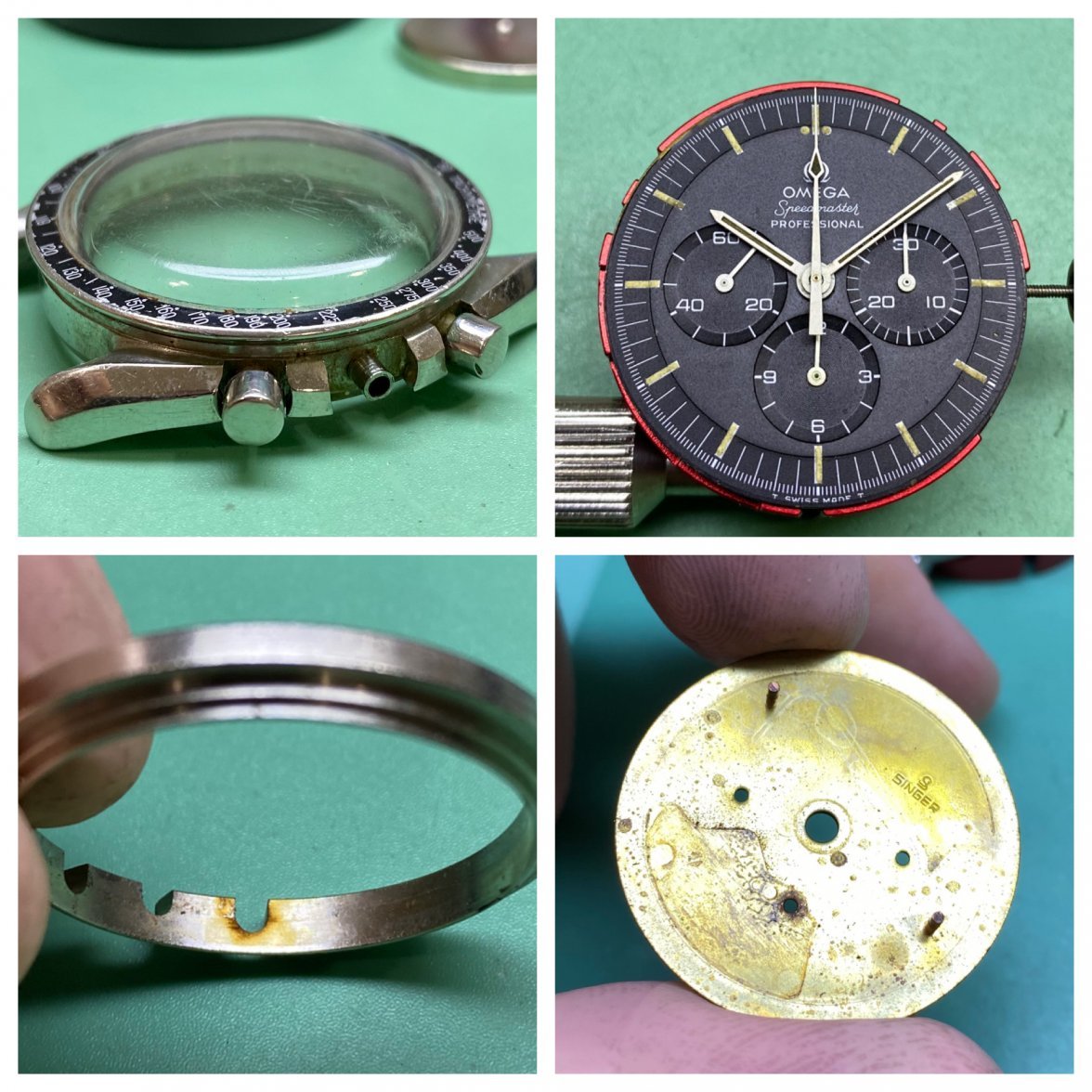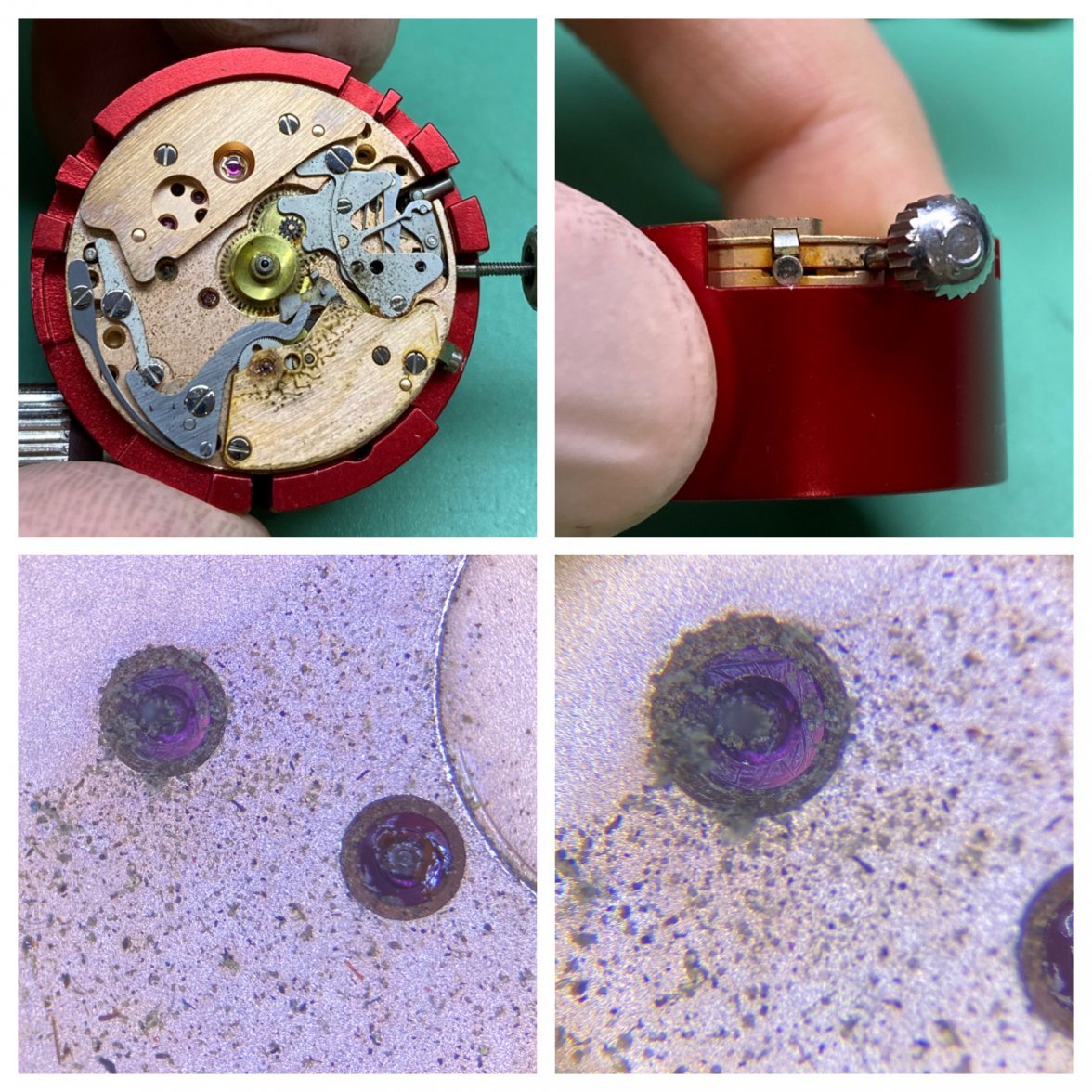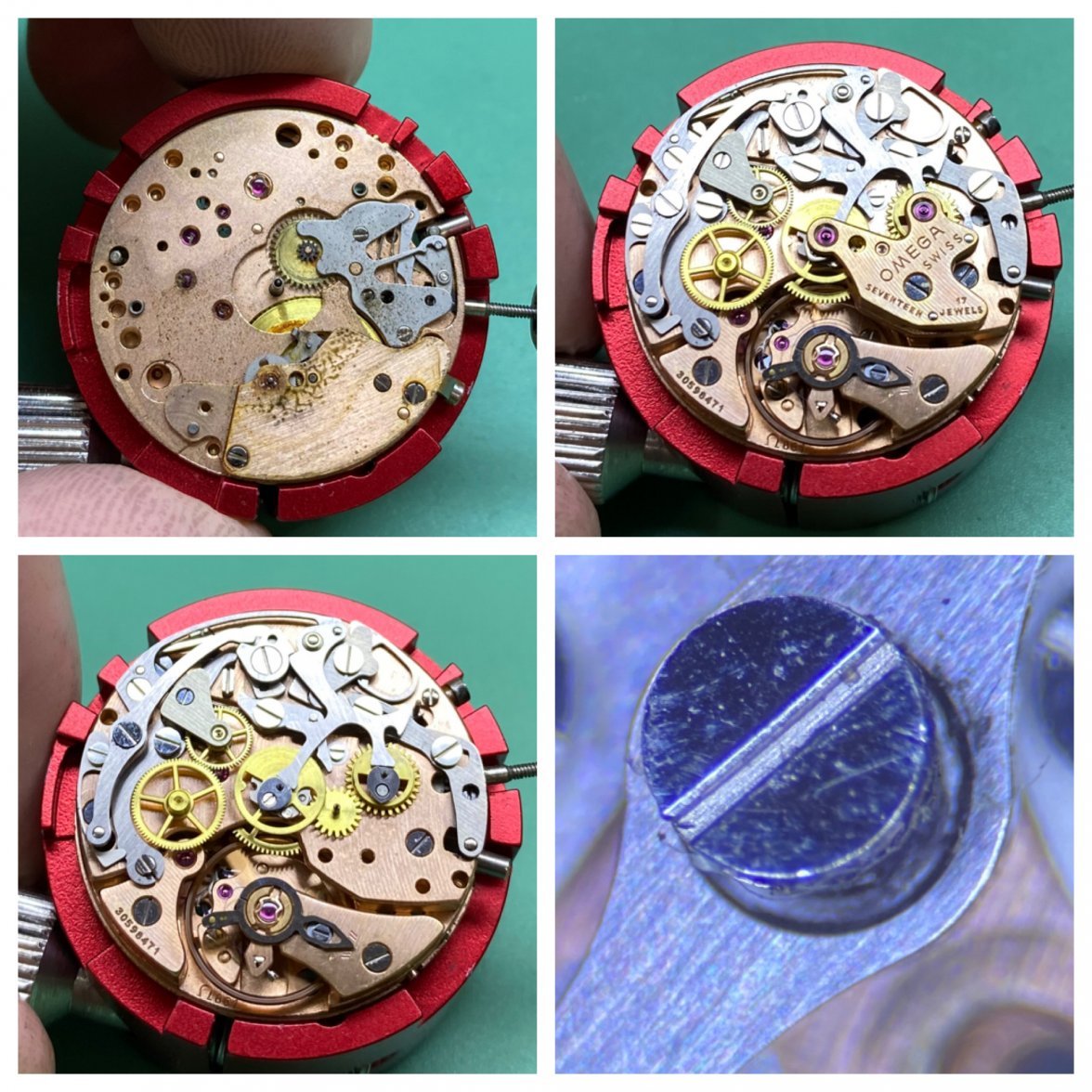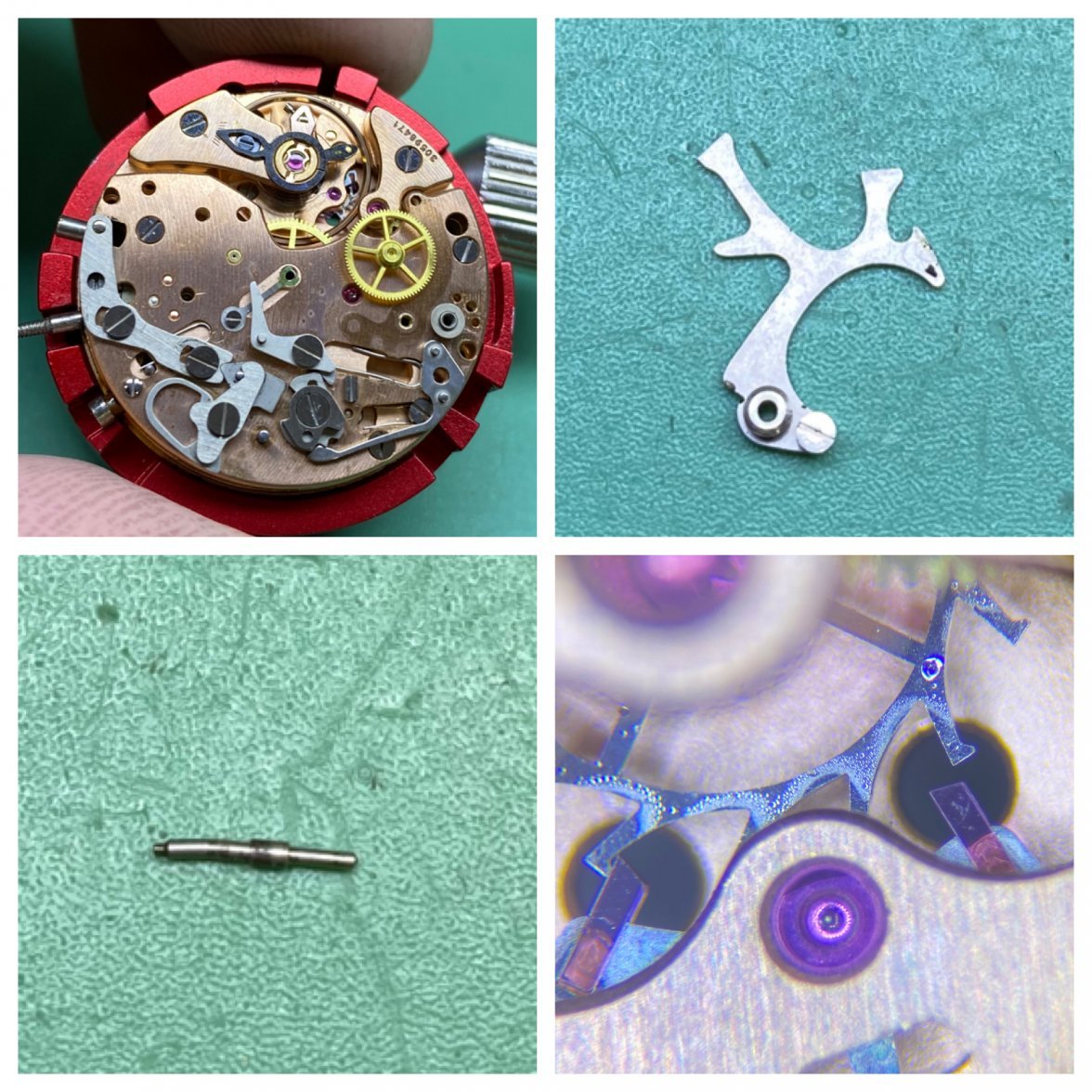precisionhrlgy
·I know many collectors nowadays like to use electronic equipment to check the timing and amplitude of their watches. I read time and time again stories of people on various forums discussing the subject and using the numbers as a baseline to know when a watch needs servicing. The numbers can be helpful and bad numbers definitely indicate that a watch needs servicing, but it is only half the story. Good numbers can quite often lie.
If we look at this Speedy that just came into my shop - the initial timing results don't seem too bad. For an 861 movement to have 265 degrees of amplitude and an 11 second gain is respectable, especially considering that the watch hasn't been serviced in many moons. So, if you were trying to decide - "should I get my watch serviced based on these numbers?" you could definitely say it would be fine to leave as is for the next few years. Until we dig deeper...
We open the back and it doesn't look like a train wreck. Perhaps you even open the back and this combined with your timing numbers cement the fact that the watch doesn't need any intervention.
Once we remove it from the case we can see some rust present on the movement ring. Removing the dial reveals a rusty outline from one of the dial side bridges.
With the dial removed we get to see the real mess. Rust. Everywhere. You can see the close-u photos of the dial side train wheel jewels.
As we dig deeper ad start to remove the chronograph work hairs start to appear. Hairs seem to be wrapped around everything in this movement.
As we continue to dismantle more rust rears its ugly head. We also see bent components and a very badly lubricated escapement.
More rust and dirt.
Some close-ups of various wheel pivots and pinions along with a worn barrel arbor seating.
Some more rust and a few worn components.
It's now time to clean up what we can and order the damaged and worn components to be fitted.
To summarize, timing equipment can be a helpful tool, but it needs to be used wisely and its place properly understood.
Ashton
If we look at this Speedy that just came into my shop - the initial timing results don't seem too bad. For an 861 movement to have 265 degrees of amplitude and an 11 second gain is respectable, especially considering that the watch hasn't been serviced in many moons. So, if you were trying to decide - "should I get my watch serviced based on these numbers?" you could definitely say it would be fine to leave as is for the next few years. Until we dig deeper...
We open the back and it doesn't look like a train wreck. Perhaps you even open the back and this combined with your timing numbers cement the fact that the watch doesn't need any intervention.
Once we remove it from the case we can see some rust present on the movement ring. Removing the dial reveals a rusty outline from one of the dial side bridges.
With the dial removed we get to see the real mess. Rust. Everywhere. You can see the close-u photos of the dial side train wheel jewels.
As we dig deeper ad start to remove the chronograph work hairs start to appear. Hairs seem to be wrapped around everything in this movement.
As we continue to dismantle more rust rears its ugly head. We also see bent components and a very badly lubricated escapement.
More rust and dirt.
Some close-ups of various wheel pivots and pinions along with a worn barrel arbor seating.
Some more rust and a few worn components.
It's now time to clean up what we can and order the damaged and worn components to be fitted.
To summarize, timing equipment can be a helpful tool, but it needs to be used wisely and its place properly understood.
Ashton








